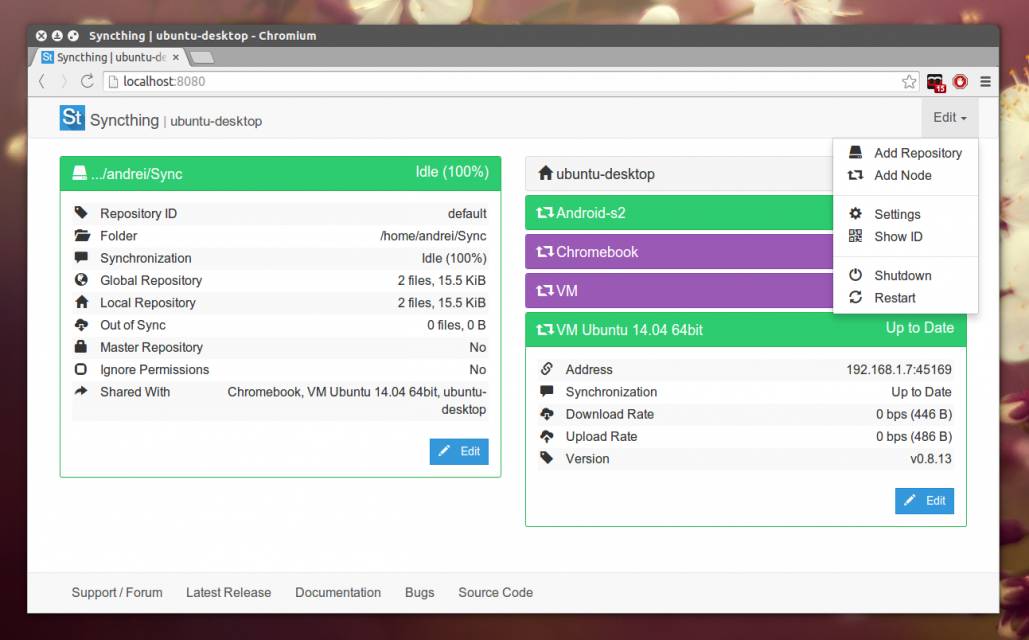
Fire up your browser and point it to You will be greeted with the default web UI of Syncthing. Once Syncthing is running, it exposes its default interface via HTTP at the local port 8384.

The system service can be accessed with the name rvice. If you run a home server, a NAS or even a Raspberry Pi you already have the means to easily set up your Syncthing and have your files always available. Syncthing runs in a distributed manner, meaning that essentially all clients are at the same level and run the same software. In order to sync data between two or more devices without the intervention of a third party, these need to be online. Syncthing runs on your devices and syncs file over the network by establishing direct communications between them.

Alternatives that do not require external parties’ services, and that put you in control. You can’t trust them, and you’ve got alternatives. These companies have been caught time after time doing bad stuff, and the amount of power they have by holding millions of people’s files is too large. It does not matter that they promise not to look at your data, or swear that even they can’t look at the files because they are encrypted. When you give away your private files to someone else you are giving away part of your privacy. Why would you give up the convenience of having someone else storing your files for you? First and foremost, privacy.
#Syncthing cloud how to#
In this post I’ll talk about how it works and how to set it up to sync directories between your computers, laptops and phones.
#Syncthing cloud free#
If you actually care about your files and feel uneasy to have them all in other people’s servers, you may want to have a look at Syncthing, an open source and free (as in free beer) continuous file synchronization program that synchronizes your files between your computers without being stored or ever going through third parties. I’m told it is not uncommon to use these external services to back up all one’s files, from photos to sensitive and private documents.

These days almost everyone uses services like Dropbox or mega.nz to store their important files and have them accessible wherever and whenever they need them.


 0 kommentar(er)
0 kommentar(er)
